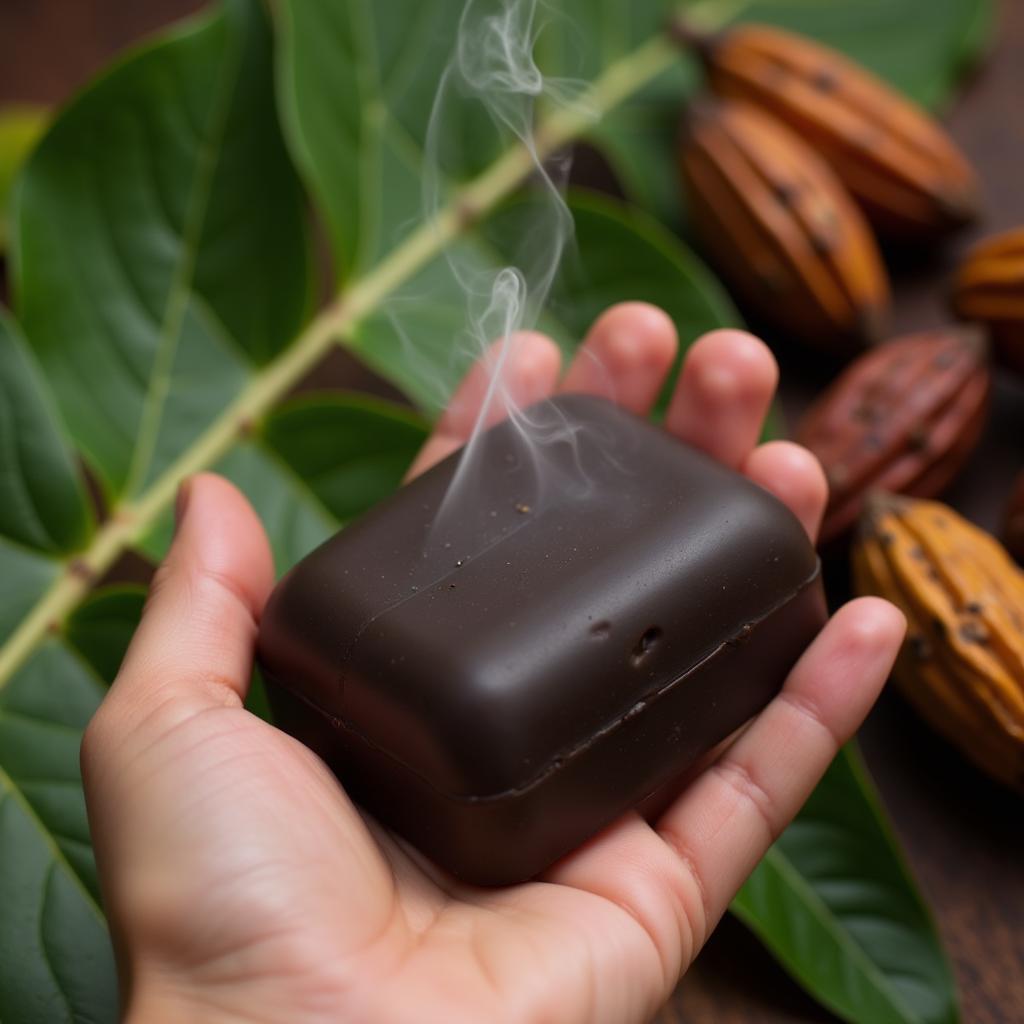Decoding African Wild Dog Sounds: A Symphony of the Savanna
African Wild Dog Sounds are a complex and fascinating aspect of these endangered creatures’ lives. These highly social animals rely on a unique vocabulary of whistles, whines, chatter, and calls to communicate, coordinate hunts, and maintain their tight-knit pack structure. Understanding these vocalizations provides valuable insight into their intricate social dynamics and survival strategies in the challenging African wilderness. Let’s delve into the captivating world of African wild dog communication.
The African wild dog, also known as the painted dog or Cape hunting dog, possesses a remarkably diverse vocal repertoire. Unlike the iconic bark of domestic dogs, their communication relies on a range of high-pitched whistles, chirps, and chattering sounds. These unique vocalizations are essential for coordinating their cooperative hunting strategies, maintaining social cohesion within the pack, and raising their young. These sounds are often compared to bird calls, highlighting their distinctive nature. More than just simple noises, these sounds paint a vivid picture of life in a wild dog pack. Researchers have identified specific vocalizations associated with different behaviors, offering us a glimpse into their complex communication system. Learning about these sounds not only enhances our appreciation for these remarkable animals but also contributes to their conservation by providing insights into their behavior and social structure.
The Meaning Behind the Howls and Whistles: Understanding African Wild Dog Vocalizations
African wild dogs are highly social animals, living in packs that can number up to 30 individuals. This intricate social structure requires a sophisticated communication system, and their vocalizations play a crucial role. From the characteristic “hoo” call used for rallying the pack before a hunt to the soft whines of pups interacting with their mothers, each sound carries a specific meaning. These vocalizations are not just random noises; they are a carefully orchestrated language that allows these intelligent creatures to thrive in the challenging African environment.
One of the most recognizable African wild dog sounds is the “hoo” call. This high-pitched, bird-like sound is used to rally the pack before a hunt. It’s a crucial element of their cooperative hunting strategy, ensuring that all members are coordinated and ready to pursue their prey. This rallying call echoes through the savanna, a testament to the power of communication in the wild.
The “Hoo” Call: A Hunting Symphony
The “hoo” call is not simply a signal to begin the hunt; it also serves to strengthen social bonds within the pack. This pre-hunt ritual reinforces their unity and shared purpose, increasing their chances of a successful hunt. Think of it as their version of a team huddle before a big game.
Beyond the Hunt: Other African Wild Dog Vocalizations
While the “hoo” call is perhaps the most well-known, African wild dogs employ a wide range of other vocalizations. These include:
- Contact calls: Soft, chirping sounds used to maintain contact with other pack members, especially during hunts or when navigating dense vegetation.
- Greeting ceremonies: A complex series of whines, twitters, and chattering sounds exchanged when pack members reunite after a separation. This ritual reinforces social bonds and establishes the hierarchy within the pack.
- Alarm calls: Sharp barks and growls used to warn of danger, such as the presence of predators.
- Pup calls: Soft, high-pitched whines used by pups to communicate with their mothers and other pack members.
Dr. Jane Carter, a leading expert in African wild dog behavior, notes, “The diversity of their vocalizations is a testament to their complex social structure. Each sound plays a vital role in maintaining the cohesion of the pack and ensuring their survival.”
The Importance of Understanding African Wild Dog Sounds
By studying african hunting dog sounds, researchers gain valuable insights into their behavior, social dynamics, and communication strategies. This knowledge is crucial for developing effective conservation efforts to protect these endangered animals. Understanding how they communicate allows us to better understand their needs and develop strategies to mitigate threats to their survival.
Professor David Wilson, a wildlife biologist specializing in African carnivores, adds, “The more we learn about their communication, the better equipped we are to protect them. Every sound tells a story about their lives, and these stories are vital for their conservation.” For example, understanding their territorial calls can help conservationists manage land use to minimize conflict with human activities. Similarly, recognizing their alarm calls can provide early warning of potential threats, such as poaching or habitat encroachment.
Conclusion: The Future of African Wild Dog Sounds
The captivating world of African wild dog sounds offers a unique window into the lives of these remarkable creatures. Understanding these vocalizations is crucial for their conservation, ensuring that their symphony of the savanna continues to echo for generations to come. Learning about african dog puppies also contributes to our broader understanding of the intricate web of life in the African ecosystem.
FAQ
- What is the most common African wild dog sound? The “hoo” call is the most recognizable and frequently heard sound, used for rallying the pack before a hunt.
- How do African wild dog sounds differ from domestic dog sounds? Unlike the bark of domestic dogs, African wild dogs communicate using a range of whistles, chirps, and chattering sounds, often compared to bird calls.
- Why is understanding African wild dog sounds important for conservation? Studying their vocalizations provides insights into their behavior, social dynamics, and communication, crucial for developing effective conservation strategies.
- How do African wild dogs use sounds during hunts? The “hoo” call is used before a hunt to rally the pack. Contact calls are used during the hunt itself to stay connected.
- What other sounds do African wild dogs make besides the “hoo” call? They also use contact calls, greeting ceremony sounds, alarm calls, and pup calls.
- What is the social structure of African wild dogs? They live in packs that can number up to 30 individuals, with a complex social hierarchy.
- Where can I learn more about 10 african animals? Click the link to discover more amazing animals found in Africa.
You can also find valuable insights by exploring topics like african grey behaviour or plan your next adventure with african budget safaris kruger.
When you need assistance, please contact us at Phone Number: +255768904061, Email: kaka.mag@gmail.com, or visit our office at Mbarali DC Mawindi, Kangaga, Tanzania. We have a 24/7 customer service team available.


